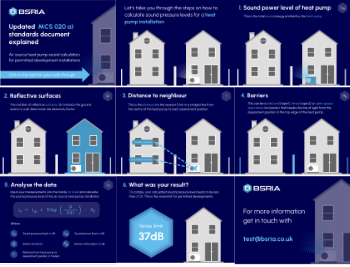Construction drawing
Construction drawing is the general term used for drawings that form part of the production information that is incorporated into tender documentation and then the contract documents for the construction works. This means they have legal significance and form part of the agreement between the employer and the contractor.
The main purpose of construction drawings is to provide a graphic representation of what is to be built. Construction drawings should be concise and coordinated to avoid, wherever possible, ambiguity and confusion. Delays and misunderstandings can be minimised by properly coordinating the drawings. For more information, see Document control.
Specifications will detail the materials, standards, techniques, and so on required to carry out the works. Construction drawings provide the graphical representation, indicating the arrangement of components, detailing, dimensions, and so on. They may sometimes contain some of the information set out in specifications, but this should be avoided if possible, by referring to specifications rather than duplicating information. Where there is a crossover, care must be taken to ensure proper co-ordination so there is no confusion. If there is a disparity between the two, the specifications will tend to take precedence over the drawings.
A complete set of construction drawings tends to comprise floor plans, elevations, sections, and detail drawings, that together provide a complete representation of the building. On many projects, each major trade will have separate trade drawings, e.g. electrical, plumbing, and so on.
Construction drawings may be prepared by hand, but it is more common for them to be prepared using computer-aided design (CAD) (or computer-aided drafting) software.
More recently, the use of Building Information Modelling (software) has allowed the creation of a 1:1 virtual construction model (VCM), containing information allowing all objects in the model to be manufactured, installed, or constructed.
See also: Types of drawings for building design.
[edit] Related articles on Designing Buildings Wiki
- Blueprint.
- Bill of quantities.
- Building drawing software.
- Building information modeling.
- Computer-aided design.
- Contract documents.
- Design drawings.
- Design Information.
- Document control.
- General arrangement drawing.
- How to draw a floor plan.
- Production information.
- Project information.
- Specification.
- Types of drawings.
Featured articles and news
Gregor Harvie argues that AI is state-sanctioned theft of IP.
Heat pumps, vehicle chargers and heating appliances must be sold with smart functionality.
Experimental AI housing target help for councils
Experimental AI could help councils meet housing targets by digitising records.
New-style degrees set for reformed ARB accreditation
Following the ARB Tomorrow's Architects competency outcomes for Architects.
BSRIA Occupant Wellbeing survey BOW
Occupant satisfaction and wellbeing tool inc. physical environment, indoor facilities, functionality and accessibility.
Preserving, waterproofing and decorating buildings.
Many resources for visitors aswell as new features for members.
Using technology to empower communities
The Community data platform; capturing the DNA of a place and fostering participation, for better design.
Heat pump and wind turbine sound calculations for PDRs
MCS publish updated sound calculation standards for permitted development installations.
Homes England creates largest housing-led site in the North
Successful, 34 hectare land acquisition with the residential allocation now completed.
Scottish apprenticeship training proposals
General support although better accountability and transparency is sought.
The history of building regulations
A story of belated action in response to crisis.
Moisture, fire safety and emerging trends in living walls
How wet is your wall?
Current policy explained and newly published consultation by the UK and Welsh Governments.
British architecture 1919–39. Book review.
Conservation of listed prefabs in Moseley.
Energy industry calls for urgent reform.























